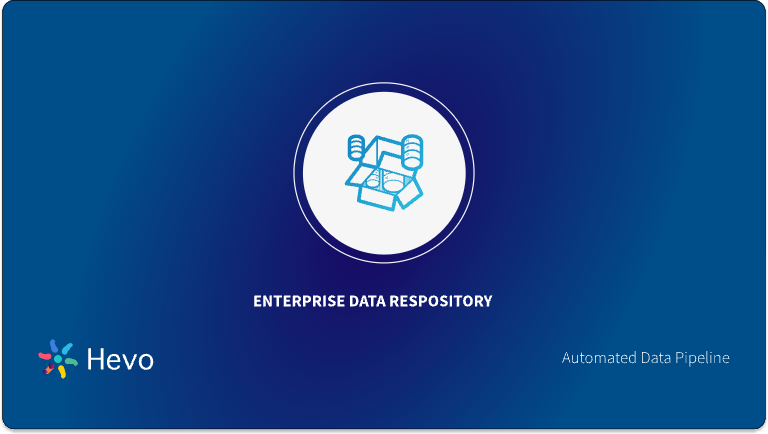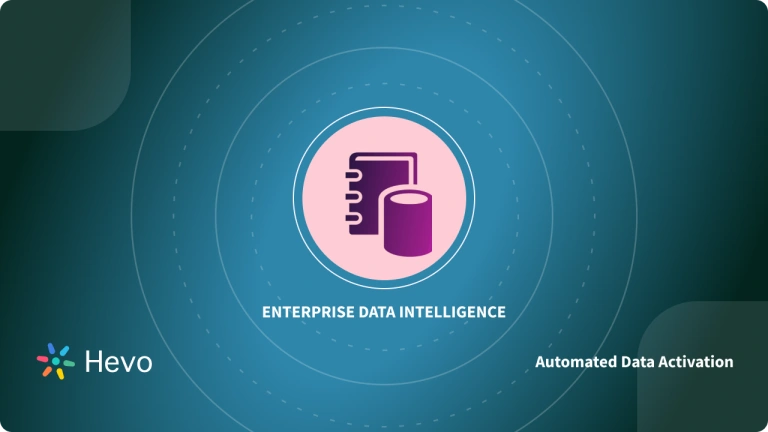Efficient data management is a crucial part of an enterprise’s success. Data architecture helps streamline data management and workloads. It also enables you to establish a data governance framework that improves the data quality and gives useful business insights. These data-driven insights can improve customer experiences and product development.
In this article, you will learn how to design enterprise database architecture to unlock the full potential of your data assets and achieve the desired growth.
Table of Contents
What is Enterprise Data Architecture?
Data architecture focuses on the design, structure, and organization of data assets within a specific project, application, or domain. Enterprise data architecture, on the other hand, refers to the models, policies, and standards governing data collection, storage, arrangement, and integration at the enterprise level. It can be applied across all systems, applications, and business units to support enterprise asset management database needs and overall data governance.
Enterprise database architecture is a subset of enterprise data architecture that focuses specifically on database design, structure, and management. It defines how databases are structured, optimized, and maintained to ensure efficient data flow across the organization. A well-designed enterprise database architecture supports seamless integration between various applications and systems, enabling better decision-making and operational efficiency. As businesses grow, scalable and secure database solutions become essential, often requiring tailored software development solutions for enterprises to handle complex data environments. It enables you to select, deploy, and configure database management systems (DBMS) and database technologies to support your organization’s data storage, retrieval, and management requirements.
Explore the essential enterprise database features that can enhance your business operations. Learn how these features support scalability and performance.


Components of Enterprise Data Architecture
The components of data architecture are as follows:
- Data Pipelines: A data pipeline is an automated process for moving data between different locations. It consists of consolidating raw data from various sources, transforming it, and storing it in a data lake or data warehouse for analysis.
- Cloud Storage: It refers to a model of data storage that saves digital information on servers located in remote facilities rather than on physical devices.
- Cloud Computing: Along with cloud storage, many modern enterprise data architectures use cloud computing to analyze and manage data. This includes delivering computing services such as servers, storage, databases, networking, software, and analytics over the internet.
- AI and ML Models: Modern enterprise data architecture utilizes AI and ML models to analyze large volumes of data, extract insights, and automate decision-making processes.
- Data Streaming: Data streaming involves continuous and real-time data transmission from a source to a destination, typically over a network. It enables the immediate processing and analysis of data as it is generated.
- Real-Time Analytics: It involves analyzing data as it is generated or received, allowing immediate discovery of insights for decision-making. The enterprise data architecture can leverage real-time analytics to enhance operational efficiency and detect anomalies or patterns in real-time data streams.
With Hevo, you can seamlessly integrate data from multiple sources into any data warehouse, ensuring your organization has a unified view of its data assets.
Why Use Hevo for Data Warehouse Integration?
- No-Code Platform: With Hevo’s user-friendly interface, you can easily set up and manage your data pipeline without any technical expertise.
- Broad Source and Destination Support: Connect to over 150+ sources, including databases, SaaS applications, and more, and load data into your preferred data warehouse.
- Real-Time Data Sync: Keep your data warehouse up-to-date with real-time data flow, ensuring your analytics are always based on the latest information.
Advantages of Enterprise Data Architecture
A well-defined enterprise data architecture provides several advantages, such as:
- Automation: Enterprise database architecture streamlines data flows, enabling automated data collection, aggregation, and transformation processes. It comprises real-time analytics and machine learning models that can be used to automate decisions based on predefined rules or predictive algorithms.
- Data Security: It enables you to classify and segment data based on sensitivity and criticality into different tiers, which helps enforce access controls and encryption measures according to data sensitivity. You can establish role-based access control (RBAC), attribute-based access control (ABAC), and multi-factor authentication (MFA) within the architecture to restrict unauthorized access to sensitive data.
- Better Data Quality: Enterprise data architecture includes mechanisms for data quality management, such as validation rules, cleansing routines, and metadata management. These ensure that data entering automated processes meets predefined quality standards, reducing the need for manual intervention. It also establishes standards for data formats and provides a framework for data governance, improving data quality.
- Regulatory Compliance: Enterprise data architecture helps you fulfill regulatory requirements. It facilitates the establishment of a data governance framework, data standardization, and data lineage. It also enables data security through encryption and access control, which aids in following regulatory standards.
Challenges in Designing Enterprise Data Architecture
You may face several challenges while designing an enterprise database architecture. Some of these are:
- Complexity: The data you refer to can come from various sources, formats, and types. It can be structured, semi-structured, or unstructured with different schemas. You should clearly understand different data types and have an efficient data integration and transformation process that can handle various data formats accurately.
- Scalability and Performance: Designing enterprise data architecture can become difficult as data volume and velocity grow. It needs to be flexible and adaptable to changing data demands and efficiently deliver data promptly.
- Data Security: Data security involves protecting data from unauthorized or malicious access, modification, or disclosure. You need a data security strategy that includes encryption, authentication, auditing, and backup.
- Analytics: Enabling data analytics and insights that support your business decisions and actions can be challenging. For this, you need an enterprise data architecture that supports different types of analytics, such as descriptive, diagnostic, predictive, and prescriptive. It should also facilitate data access, exploration, visualization, and collaboration for different users and roles, often guided by a database analyst who ensures data systems are optimized for such analytical tasks.
Best Practices for Enterprise Data Architecture
You should keep in mind the following best practices to frame a well-designed enterprise data architecture:
- Cloud-based Platforms: You should consider leveraging cloud technologies in your enterprise data architecture. They offer scalability, cost-efficiency, and easier data management.
- Focus on Flexibility and Extensibility: Your data formats and business needs may evolve over time. Therefore, you should design your enterprise data architecture with flexible schemas to easily accommodate new data types and sources.
- Align with Business Goals: Besides technical aspects, ensure that the enterprise data architecture strategy aligns with your organization’s overall business objectives and supports its long-term vision.
- Seamless Data Integration: Your enterprise database architecture should facilitate seamless integration and interoperability between disparate data sources. It helps you eliminate isolated data pockets within different departments.
- Cross-Functional Collaboration: By fostering a collaborative environment, you can leverage the expertise of different teams, such as IT, marketing, and product development teams. It helps build an enterprise data architecture that is robust, scalable, and effectively meets your organization’s evolving needs.
Best Enterprise Databases for Data Architecture
Here are some of the best database systems you can use for enterprise database architecture:
1. MySQL Enterprise
MySQL Enterprise is a subscription-based database provided by Oracle for MySQL. It consists of additional features, tools, and support services to enhance MySQL databases’ security, scalability, performance, and reliability in enterprise environments. Also, it reduces the risk, cost, and complexity of developing, deploying, and managing business-critical MySQL applications.
2. PostgreSQL
PostgreSQL is an open-source RDBMS that enables you to write SQL queries to extract, transform, and analyze data. It is a reliable and flexible database with partition handling, parallel functionality, and index-speeding capabilities. This makes PostgreSQL a suitable database option for businesses of all sizes, especially those who may not have the budget to invest in expensive database management systems. It comprises a large community of developers contributing to its development, support, and documentation.
3. Oracle Database
Oracle Database is one of the most popular enterprise-level database management systems. Oracle Corporation developed it to manage and process large amounts of data quickly and efficiently. As a result, you can use Oracle Database, regardless of your company size, to store and manage critical business data. It has an In-Memory Columnar database technology that enables quick and efficient real-time processing of large amounts of data. Oracle database is also highly scalable, offering horizontal and vertical scaling options. Further, the security features and integration with cloud technologies make it a top choice for organizations across industries.
4. MongoDB
MongoDB is a non-relational or NoSQL database. It stores data as “documents” rather than fixed tables and in BSON, a Binary JSON format. MongoDB is designed for high-volume data storage and can quickly process large amounts of real-time data. It is used for enterprise database architecture because it operates in fast, agile environments and stores both structured and semi-structured data.
5. Amazon DynamoDB
Amazon DynamoDB is a cloud-native NoSQL database. It excels at handling massive datasets due to its high scalability, making it suitable for applications with high user loads and unpredictable traffic patterns. DynamoDB delivers consistent single-digit millisecond latency for reads and writes, ensuring a fast and responsive user experience for your applications. It also supports NoSQL database replication, which enhances availability and fault tolerance across multiple regions. Thus, DynamoDB is a powerful database service for specific enterprise needs, particularly high-performance, scalable applications with simple data models.
Discover how the principles of modern data architecture enhance enterprise solutions for better data management
Use of Hevo for Enterprise Database Architecture
Consolidating data from various sources into a unified and consistent format helps in efficient enterprise data architecture design. Data integration breaks down data silos, improves data quality, and enhances data analytics. To carry out data integration tasks, you need a no-code ELT platform like Hevo Data.
Hevo has over 150 connectors, including automated source and destination connectors to several enterprise databases. These connectors centralize your data and provide cost-effective real-time data integration to improve data accessibility, which is essential for a good enterprise data architecture. Here are some of the most important features of Hevo Data:
- Data Transformation: Hevo Data allows you to transform your data for analysis with a simple Python-based drag-and-drop data transformation technique.
- Automated Schema Mapping: Hevo Data automatically arranges the destination schema to match the incoming data. It also lets you choose between Full and Incremental Mapping.
- Incremental Data Load: It ensures proper bandwidth utilization at both the source and the destination by allowing real-time data transfer of the modified data.
With Hevo, you can integrate your data into multiple platforms and conduct advanced analysis. It can empower you to gain valuable insights, improve decision-making, and streamline operations.
For a deeper dive into the foundational aspects of data architecture, check out our guide on its types and key components.
Conclusion
This blog provides comprehensive information on enterprise database architecture, its importance, and best practices. A well-designed data architecture enables you to make smarter decisions and drives real business value. Integrating data is an important component of enterprise data architecture. Hevo’s features, such as no-code configuration and easy pipeline setup, make it one of the best data integration tools. You can schedule a demo to leverage these benefits today!
Want to take Hevo for a spin? Sign Up for a 14-day free trial and experience the feature-rich Hevo suite firsthand.
FAQs
What is the difference between a data architect and an enterprise data architect?
The data architect manages the data models, data types, data integrations, and data classifications that support the application layer and align with business requirements. The enterprise architect designs the infrastructure, middleware, and software frameworks that support business applications.
What is a good enterprise database design?
A good enterprise database design prioritizes reduced redundancy, data integrity, scalability, and flexibility. Also, it should adhere to data governance principles, comply with regulatory requirements, and facilitate easy integration with other systems.






